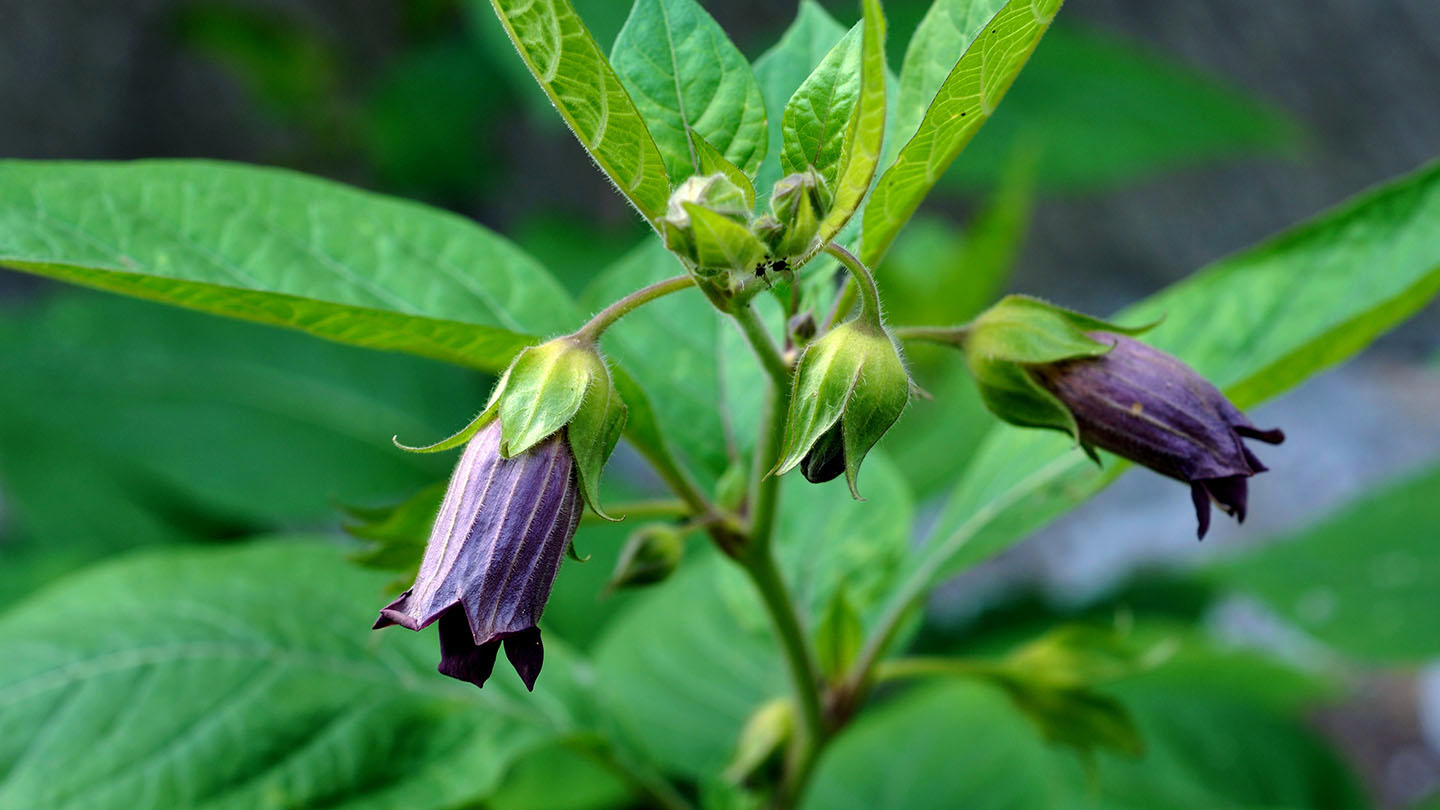
Deadly Nightshade, also known as Atropa belladonna, is a plant shrouded in mystery and danger. This toxic beauty has a dark history, often associated with witches, poisonings, and ancient rituals. But what makes this plant so fascinating? Deadly Nightshade contains potent alkaloids like atropine and scopolamine, which can be lethal in small doses. Despite its deadly reputation, it has been used in medicine for centuries. From dilating pupils to treating muscle spasms, its uses are as varied as they are risky. Curious about this enigmatic plant? Here are 37 facts that will shed light on its perilous allure and historical significance.
Key Takeaways:
- Deadly Nightshade, also known as Atropa belladonna, is a highly toxic plant with a dark history. Even small amounts can be lethal, and it has been used in poisonings and witchcraft throughout history.
- Despite its deadly nature, Deadly Nightshade has found modern uses in medicine, cosmetics, and agriculture. It is also studied for its potential benefits and risks, and efforts are made to educate the public about its dangers.
What is Deadly Nightshade?
Deadly Nightshade, also known as Atropa belladonna, is a plant with a notorious reputation. Its dark history and toxic properties make it a subject of fascination and caution.
- Scientific Name: Atropa belladonna is the scientific name for Deadly Nightshade.
- Common Names: Other names include belladonna, devil's berries, and death cherries.
- Family: It belongs to the Solanaceae family, which includes tomatoes and potatoes.
- Appearance: The plant has purple bell-shaped flowers and shiny black berries.
- Height: It can grow up to 5 feet tall.
- Leaves: The leaves are oval, pointed, and can grow up to 7 inches long.
Toxicity and Effects
Deadly Nightshade is infamous for its high toxicity. Even small amounts can be lethal, making it one of the most dangerous plants.
- Toxic Compounds: Contains tropane alkaloids like atropine, scopolamine, and hyoscyamine.
- Lethal Dose: Ingesting just 2-5 berries can be fatal for children, while 10-20 berries can kill an adult.
- Symptoms: Symptoms include dilated pupils, sensitivity to light, blurred vision, and hallucinations.
- Historical Use: Used as a poison in ancient times, often in political assassinations.
- Medical Use: Despite its toxicity, it has been used in medicine to treat muscle spasms and as an anesthetic.
- Antidote: Physostigmine and pilocarpine are used as antidotes for belladonna poisoning.
Historical Significance
Deadly Nightshade has a rich history, intertwined with folklore, medicine, and even witchcraft.
- Name Origin: The name "belladonna" means "beautiful lady" in Italian, referring to its use in cosmetics.
- Cosmetic Use: Women in the Renaissance used belladonna drops to dilate their pupils, considered attractive.
- Witchcraft: Believed to be an ingredient in witches' flying ointments.
- Shakespeare: Mentioned in Shakespeare's plays, highlighting its notoriety.
- Roman Empire: Used by the Romans as a poison for executions.
- Middle Ages: Employed in Europe for its hallucinogenic properties.
Habitat and Growth
Understanding where and how Deadly Nightshade grows can help in identifying and avoiding it.
- Native Region: Native to Europe, North Africa, and Western Asia.
- Habitat: Prefers shady, moist areas like forests, hedgerows, and riverbanks.
- Soil: Thrives in well-drained, calcareous soils.
- Climate: Grows best in temperate climates.
- Propagation: Propagates through seeds and root division.
- Season: Flowers from June to September, with berries appearing in late summer.
Interesting Facts
There are many intriguing aspects of Deadly Nightshade that go beyond its toxicity and historical use.
- Pollinators: Pollinated by insects like bees and flies.
- Birds: Some birds can eat the berries without being harmed, aiding in seed dispersal.
- Symbolism: Often symbolizes danger and death in literature and art.
- Cultural References: Featured in various myths and legends, often associated with dark magic.
- Scientific Research: Studied for its potential in treating certain medical conditions.
- Conservation: Not considered endangered, but its habitats are protected in some regions.
Modern Uses
Despite its deadly nature, Deadly Nightshade has found its place in modern science and medicine.
- Pharmaceuticals: Used in the production of drugs for motion sickness and muscle relaxation.
- Cosmetics: Some modern cosmetics still use derivatives of belladonna.
- Homeopathy: Employed in homeopathic remedies for various ailments.
- Agriculture: Sometimes used as a natural pesticide.
- Research: Ongoing research into its potential benefits and risks.
- Education: Studied in botany and toxicology courses for its unique properties.
- Public Awareness: Efforts to educate the public about its dangers and safe handling practices.
The Final Word on Deadly Nightshade
Deadly nightshade, or Atropa belladonna, is a plant shrouded in mystery and danger. Known for its toxic properties, it has a rich history in medicine, folklore, and even crime. Despite its beautiful appearance, every part of the plant is highly poisonous, making it a subject of both fear and fascination. Understanding its effects and historical significance can help us appreciate the delicate balance between nature's beauty and its potential hazards. Always exercise caution around this plant, and remember that its deadly allure is not to be underestimated. Whether you're a history buff, a plant enthusiast, or just curious, knowing these facts can enrich your knowledge and keep you safe. Stay informed, stay safe, and let the mystery of deadly nightshade remain a fascinating chapter in the book of nature.
Frequently Asked Questions
Was this page helpful?
Our commitment to delivering trustworthy and engaging content is at the heart of what we do. Each fact on our site is contributed by real users like you, bringing a wealth of diverse insights and information. To ensure the highest standards of accuracy and reliability, our dedicated editors meticulously review each submission. This process guarantees that the facts we share are not only fascinating but also credible. Trust in our commitment to quality and authenticity as you explore and learn with us.
